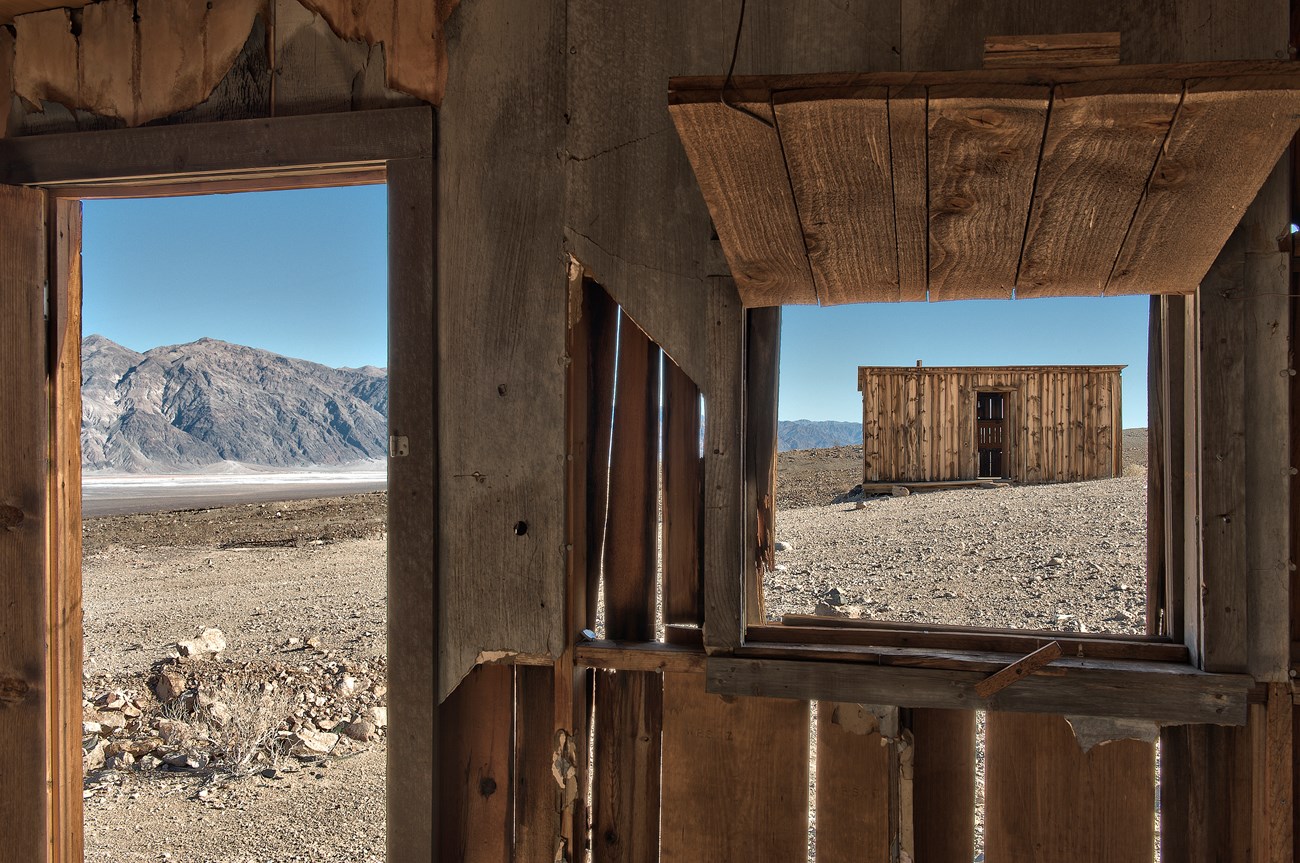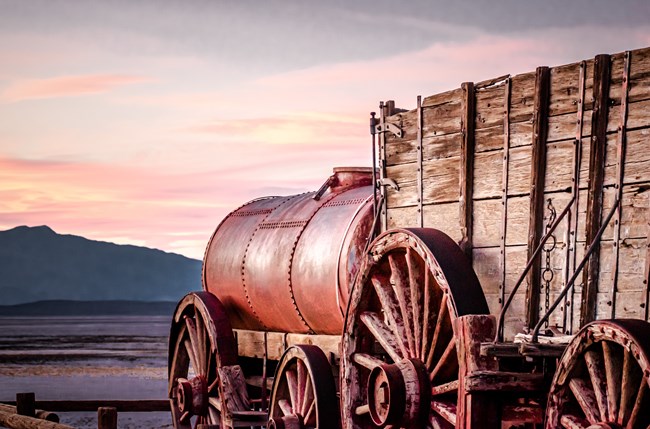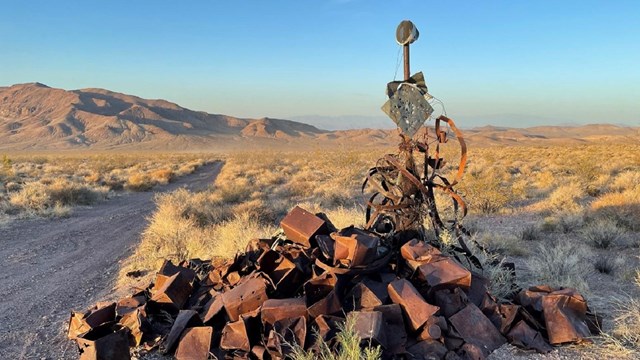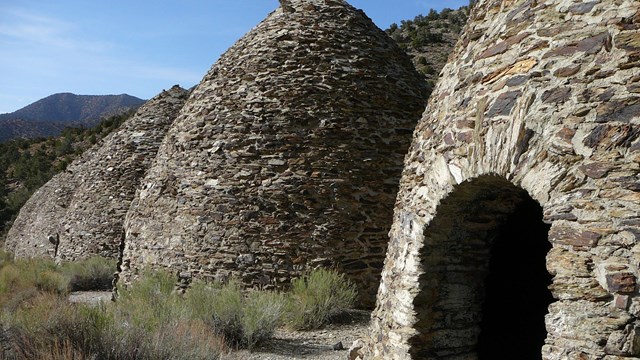
NPS/Neal Nurmi Since the 1848 discovery of gold in California, Death Valley has experienced over 140 years of boom and bust mining.Early MiningFrom the 1880s to the early 1900s, mining was limited and sporadic in the Death Valley region. Many of the early mining districts met with a notable lack of success. Primitive and inefficient technology, scarcity of water and fuel, and the difficulties of transportation made it economically impossible to mine anything but the highest grade ores. 
NPS/Jason Gray BoraxOne of the earliest successful mining operations was the Harmony Borax Works, which was active from 1883 to 1888. This operation was famous not for its ore deposits, but for the Twenty Mule Team wagons used to transport the partially refined borax. A very memorable advertising campaign used the wagons’ image to promote the company’s Boraxo soap and the Death Valley Days radio and television programs. Boom & BustWith renewed interest in gold and silver mining, the early 1900s witnessed new mines. Skidoo, Inyo, and Keane Wonder became large-scale operations. The boom towns, including Rhyolite, which sprang up around these mines flourished during the first decade of the 20th century but soon slowed down after the panic of 1907. Prospectors including Shorty Harris and Pete Aguereberry scoured the mountains searching for metals such as gold, silver, antimony, copper, lead, zinc, and tungsten. Prosperous large-scale metal mining in Death Valley ended around 1915 and the once bustling towns which supported them became ghost towns. 
Keane Wonder Mine
The wooden towers of an aerial tramway still stand at this profitable historic gold mine. 
Greenwater Valley
The "Greatest Copper Camp on Earth" was a true boom and bust Death Valley mining town. 
Wildrose Charcoal Kilns
These impressive structures were used to produce the charcoal needed for mine smelters. 
Temporary ClosureIn February 1933 President Herbert Hoover signed the proclamation creating Death Valley National Monument. This resulted in a temporary closing of monument lands to prospecting and the filing of new mining claims. By prior agreement the monument was quickly reopened to prospecting and mining by Congressional action in June of the same year. 
Mining ChangesAs improvements in mining technology allowed lower grades of ore to be processed and new heavy equipment allowed greater amounts of rock to be moved, mining in Death Valley changed. Gone were the days of the "single-blanket, jackass prospector" long associated with the romantic west. Open-pit and strip mines for borates, talc, and sulfur began to scar the landscape as internationally-owned mining corporations developed claims in highly visible locations within the national monument. The public outcry that ensued led to greater protection for all national park areas. 
More ProtectionCongress passed the Mining in the Parks Act in 1976 which closed Death Valley National Monument to the filing of new mining claims and required the National Park Service to examine the validity of thousands of pre-1976 mining claims. Mining was allowed to resume on a limited basis in 1980 with stricter environmental standards and mine operators were required to get approval of a Plan of Operations to mitigate damage to the environment. Death Valley National Park was established in 1994, enlarging the previous Death Valley National Monument by 1.3 million acres and assuming jurisdiction over hundreds of unpatented mining claims. Death Valley's Last MineFor over a decade the Billie Mine, an underground borate mine along the road to Dante’s View, was the only active mine in the park. In 2005 when the Billie Mine closed, the last of Death Valley’s mines had ceased operations. Historic Resource StudyA History of Mining |
Last updated: August 16, 2023
